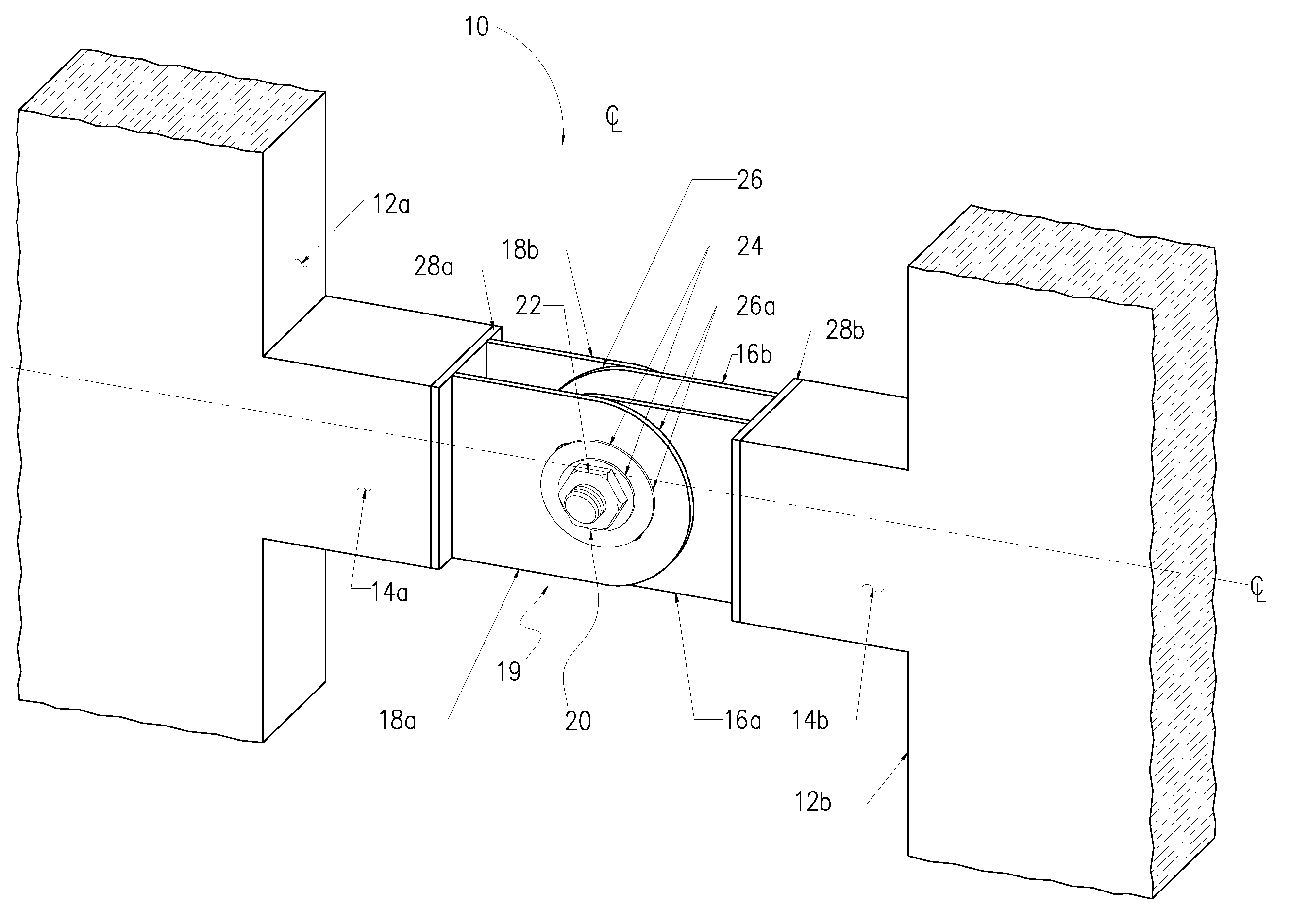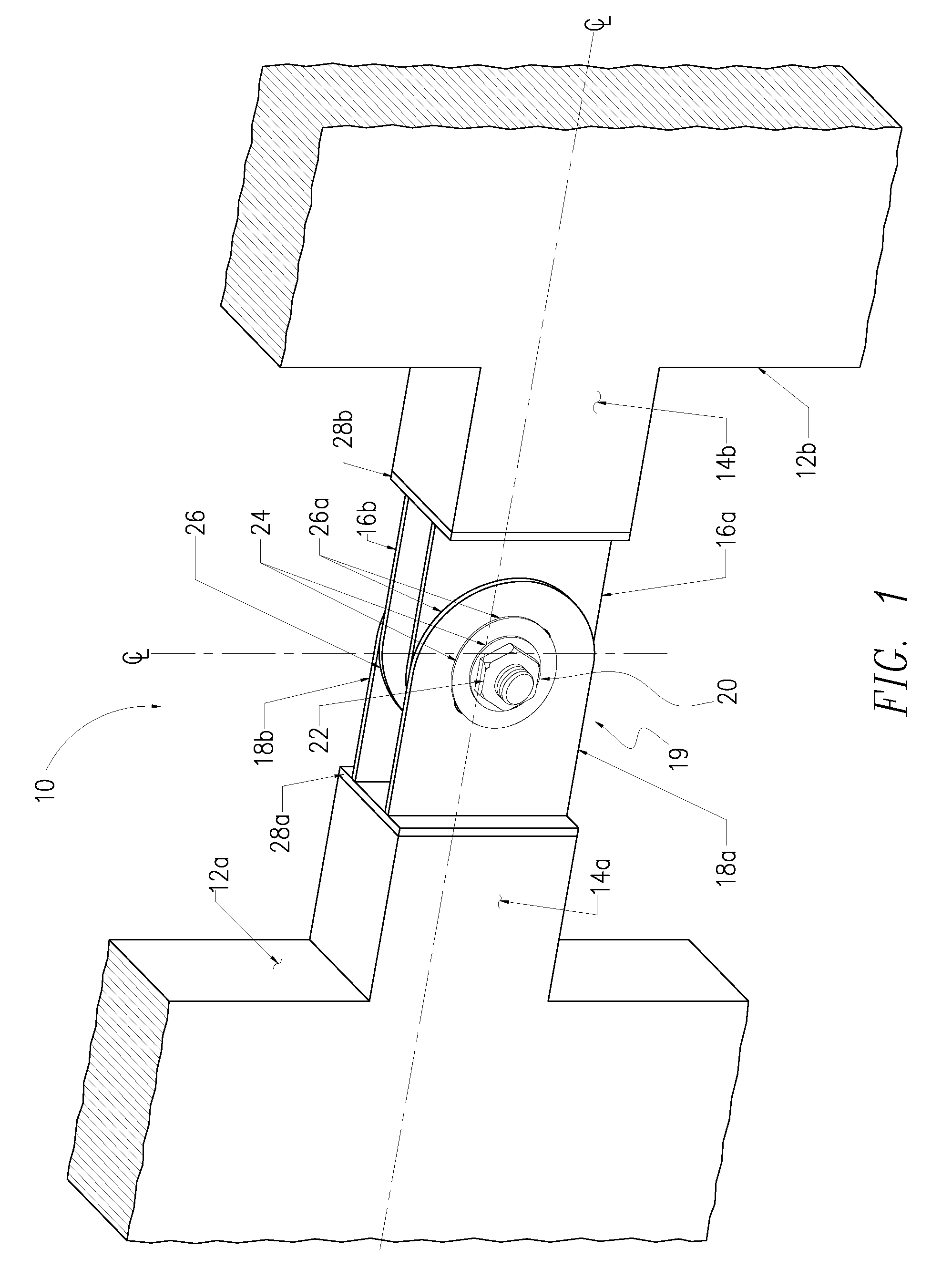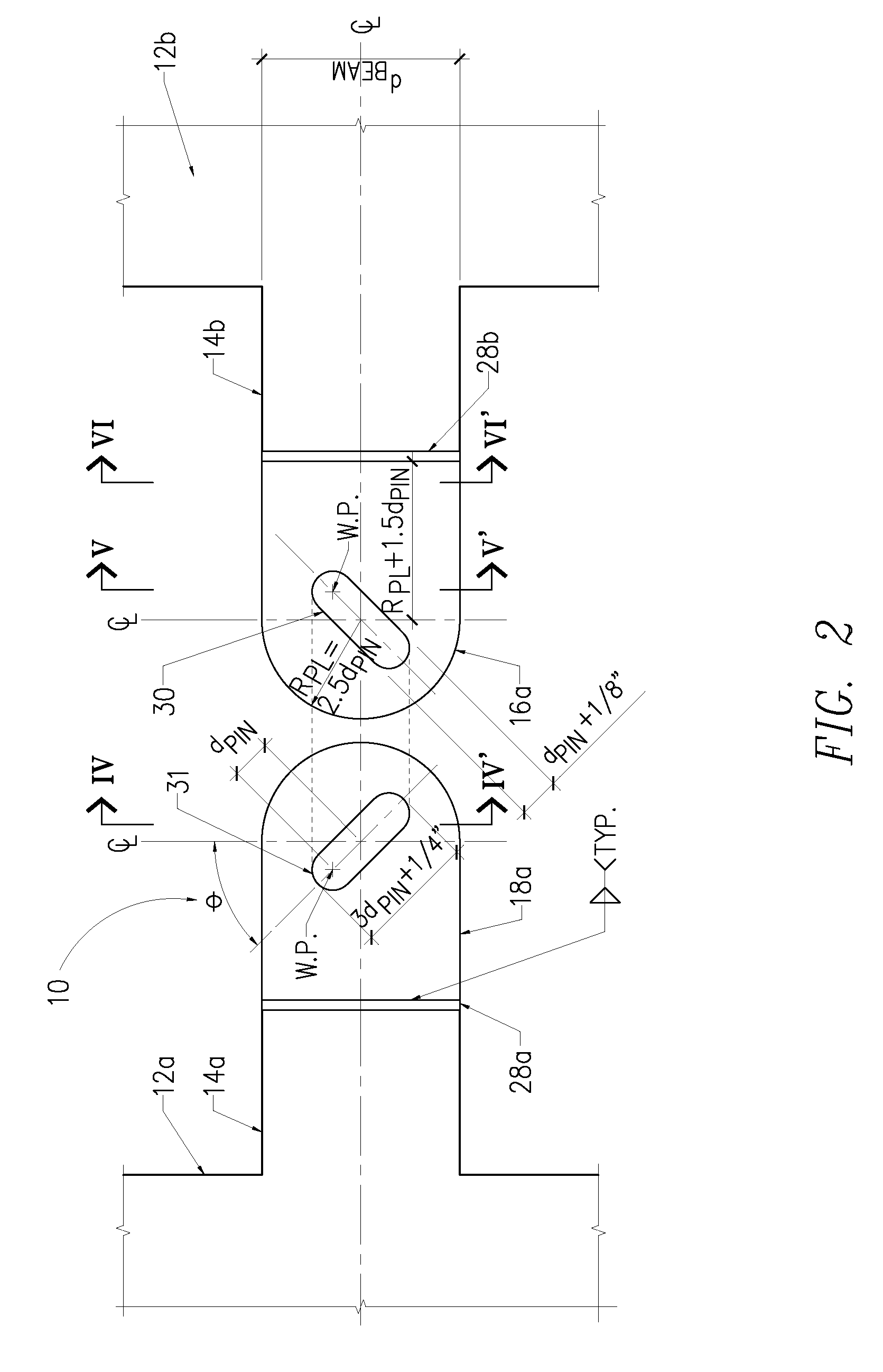Seismic structural device
a seismic structural and beam joint technology, applied in the direction of portable frames, lighting support devices, candle holders, etc., can solve the problem of the joint slipping in the planer direction, and achieve the effect of softening the structure, changing and improving the dynamic characteristics of the structur
- Summary
- Abstract
- Description
- Claims
- Application Information
AI Technical Summary
Benefits of technology
Problems solved by technology
Method used
Image
Examples
Embodiment Construction
[0032]Reference will now be made in detail to an implementation in accordance with a link-fuse joint consistent with the present invention as illustrated in the accompanying drawings. The link-fuse joint enables a shear wall or steel braced frame to withstand a seismic event without experiencing significant beam or joint failure. The link-fuse joint may be incorporated, for example, into the reinforced concrete shear walls or steel braced frames of a building or other structure subject to seismic activity and improves the structure's dynamic characteristics by allowing the link-fuse joint to slip under extreme loads. This slippage changes the structure's dynamic characteristics by lengthening the structure's fundamental period and softening the structure, which allows the structure to exhibit elastic properties during seismic events. By utilizing the link-fuse joint, it is generally not necessary to use shear walls or steel frames and link beams as large as typically used for a simi...
PUM
 Login to View More
Login to View More Abstract
Description
Claims
Application Information
 Login to View More
Login to View More - R&D
- Intellectual Property
- Life Sciences
- Materials
- Tech Scout
- Unparalleled Data Quality
- Higher Quality Content
- 60% Fewer Hallucinations
Browse by: Latest US Patents, China's latest patents, Technical Efficacy Thesaurus, Application Domain, Technology Topic, Popular Technical Reports.
© 2025 PatSnap. All rights reserved.Legal|Privacy policy|Modern Slavery Act Transparency Statement|Sitemap|About US| Contact US: help@patsnap.com



